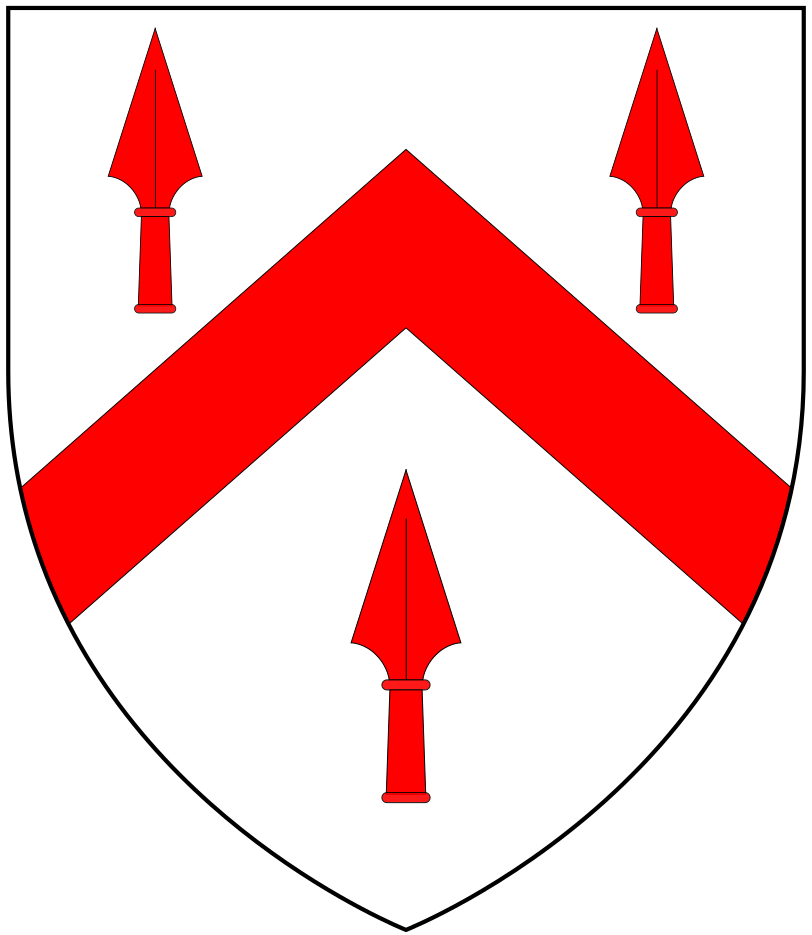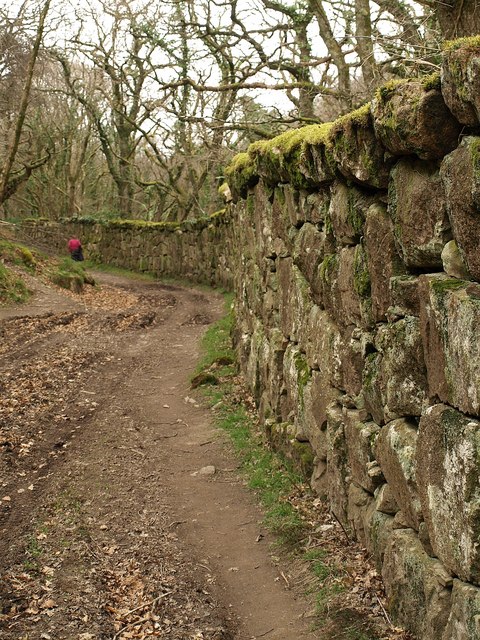John Whiddon on:
[Wikipedia]
[Google]
[Amazon]
 Sir John Whiddon (died 27 January 1576) of Whiddon in the parish of
Sir John Whiddon (died 27 January 1576) of Whiddon in the parish of

Anecdotes and Traditions, Illustrative of Early English History and Literature
', London, 1839, p. 120, No CXCVI "A Judge on Horseback", quoting "Collet, p. 64" He is said by Dugdale in his ''Origines Juridiciales'' (1666) to have been the first judge who rode to
Magna Britannia – Volume 6, Devonshire
', 1822. p. 96. He built there on his ancestral estate within that manor a new mansion house at Whiddon, part of which survives today. He enclosed a deer park with the surviving wall built of massive
The Whiddon Journey: From Medieval England to the New World
', 2016, USA Lawyers from Devon Serjeants-at-law (England) 1576 deaths
 Sir John Whiddon (died 27 January 1576) of Whiddon in the parish of
Sir John Whiddon (died 27 January 1576) of Whiddon in the parish of Chagford
Chagford is a market town and civil parish on the north-east edge of Dartmoor, in Devon, England, close to the River Teign and the A382, 4 miles (6 km) west of Moretonhampstead. The name is derived from ''chag'', meaning gorse or broom, an ...
in Devon, was a Justice of the Queen's Bench
Justice of the King's Bench, or Justice of the Queen's Bench during the reign of a female monarch, was a puisne judicial position within the Court of King's Bench (England), Court of King's Bench, under the Chief Justice of the King's Bench, Chie ...
from 4 October 1553 to his death on 27 January 1576, during the reigns of Queen Mary I and Queen Elizabeth I.
Personal life
He was the son of John Whiddon of Chagford by his wife who was a member of the Rugg family of Chagford. His ancestors were resident in the parish of Chagford for at least six generations prior to the judge. Whiddon married twice. His first wife was Ann Hollis, daughter of Sir William Hollis, by whom he had a daughter, Joane, who married John Ashley of London. His second marriage was to Elizabeth Shilston, a daughter and co-heiress of William Shilston. Among their eleven children were William, his eldest son andheir apparent
An heir apparent is a person who is first in the order of succession and cannot be displaced from inheriting by the birth of another person. A person who is first in the current order of succession but could be displaced by the birth of a more e ...
, who predeceased his father without children, having married Eleanor Basset, a daughter of John Basset (1518–1541), and Francis (died 1606), fourth son, whose granddaughter was the legendary Mary Whiddon.
Their other sons included Edward (1537–1598), second and eldest surviving son and heir, who was admitted to the Inner Temple
The Honourable Society of the Inner Temple, commonly known as the Inner Temple, is one of the four Inns of Court and is a professional association for barristers and judges. To be called to the Bar and practice as a barrister in England and Wa ...
in 1559; Oliver
Oliver may refer to:
Arts, entertainment and literature
Books
* ''Oliver the Western Engine'', volume 24 in ''The Railway Series'' by Rev. W. Awdry
* ''Oliver Twist'', a novel by Charles Dickens
Fictional characters
* Ariadne Oliver ...
, third son, who became Archdeacon of Totnes
The Archdeacon of Totnes or Totton is the senior ecclesiastical officer in charge of one of the oldest archdeaconries in England. It is an administrative division of the Church of England Diocese of Exeter and under the oversight of the Bishop su ...
; and Nicholas (died 1598), who became Rector of North Bovey
North Bovey is a village and civil parish situated on the south-eastern side of Dartmoor National Park, Teignbridge, Devon, England, about 11 miles WSW of the city of Exeter and 1.5 miles SSW of Moretonhampstead. The village lies above ...
.
Whiddon died on 27 January 1576. His monument survives in St Michael the Archangel's Church, Chagford.

Career
Whiddon entered theInner Temple
The Honourable Society of the Inner Temple, commonly known as the Inner Temple, is one of the four Inns of Court and is a professional association for barristers and judges. To be called to the Bar and practice as a barrister in England and Wa ...
to study law and became Reader and later Double Reader and Treasurer of that Inn of Court. He was created a Serjeant-at-Law in 1547, and King's Serjeant in 1551. In 1553, Queen Mary I appointed him a Justice of the Queen's Bench
Justice of the King's Bench, or Justice of the Queen's Bench during the reign of a female monarch, was a puisne judicial position within the Court of King's Bench (England), Court of King's Bench, under the Chief Justice of the King's Bench, Chie ...
.Thoms, William J. (ed.) (L'Estrange, Nicholas & Aubrey, John & Collet, John), Anecdotes and Traditions, Illustrative of Early English History and Literature
', London, 1839, p. 120, No CXCVI "A Judge on Horseback", quoting "Collet, p. 64" He is said by Dugdale in his ''Origines Juridiciales'' (1666) to have been the first judge who rode to
Westminster Hall
Westminster Hall is a medieval great hall which is part of the Palace of Westminster in London, England. It was erected in 1097 for William II (William Rufus), at which point it was the largest hall in Europe. The building has had various functio ...
on a horse or gelding
A gelding (Help:IPA/English, /ˈɡɛldɪŋ/) is a castration, castrated male horse or other equine, such as a pony, donkey or a mule. The term is also used with certain other animals and livestock, such as domesticated Camelidae, camels. By compa ...
, before which time the judges rode on mule
The mule is a domestic equine hybrid between a donkey, and a horse. It is the offspring of a male donkey (a jack) and a female horse (a mare). The horse and the donkey are different species, with different numbers of chromosomes; of the two ...
s. The manner of judges riding to Westminster Hall is recorded in the case of his father's contemporary Thomas Wolsey
Thomas Wolsey ( ; – 29 November 1530) was an English statesman and Catholic cardinal (catholic), cardinal. When Henry VIII became King of England in 1509, Wolsey became the king's Lord High Almoner, almoner. Wolsey's affairs prospered and ...
(1473–1530) as "trapped all in crimson velvet, with a saddle of the same and gilt stirrups".
Landholdings
During the reign of Queen Elizabeth I (1558–1603), he purchased the manor ofChagford
Chagford is a market town and civil parish on the north-east edge of Dartmoor, in Devon, England, close to the River Teign and the A382, 4 miles (6 km) west of Moretonhampstead. The name is derived from ''chag'', meaning gorse or broom, an ...
in Devon. Daniel Lysons and Samuel Lysons
Samuel Lysons (1763 – June 1819) was an English antiquarian and engraver who, together with his elder brother Daniel Lysons (1762–1834), published several works on antiquarian topics. He was one of the first archaeologists to investiga ...
, Magna Britannia – Volume 6, Devonshire
', 1822. p. 96. He built there on his ancestral estate within that manor a new mansion house at Whiddon, part of which survives today. He enclosed a deer park with the surviving wall built of massive
granite
Granite ( ) is a coarse-grained (phanerite, phaneritic) intrusive rock, intrusive igneous rock composed mostly of quartz, alkali feldspar, and plagioclase. It forms from magma with a high content of silica and alkali metal oxides that slowly coo ...
blocks at the entrance to the Teign Gorge. Pevsner, Nikolaus & Cherry, Bridget, The Buildings of England: Devon, London, 2004, p. 251
References
{{reflist, 30emFurther reading
* Prince, John, (1643–1723) '' The Worthies of Devon'', 1810 edition, London, biography of ''Whyddon, Sir John, Knight, Justice of King's Bench'', pp. 759–61 *Whiddon, Hayes L. Jr.,The Whiddon Journey: From Medieval England to the New World
', 2016, USA Lawyers from Devon Serjeants-at-law (England) 1576 deaths